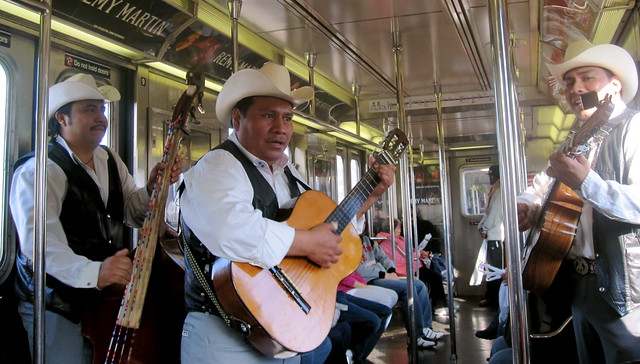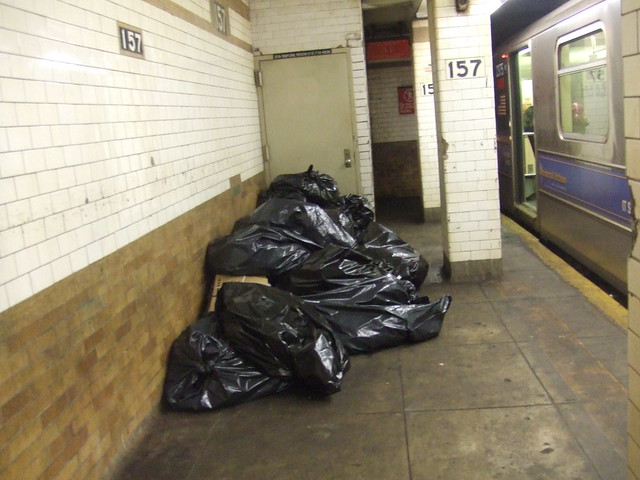
These proposed entrances for the Second Ave. Subway on 86th St. are the subject of another federal lawsuit.
Since the end of the days of Robert Moses, NIMBYism has become a rallying cry across New York City. Residents use it to block almost any major project while construction proponents point to it as a major cause of a lack of unified planning in New York City. No where is it more evident than in a suit filed this week by residents of the Yorkshire Towers building on the northeast corner at 86th St. and 2nd Ave.
The building is suing a variety of federal agencies as well as MTA, New York City Transit and MTA Capital Construction over what they allege was a faulty environmental impact assessment of the decision to relocate entrances from the corner of 86th St. and 2nd Ave. to mid-block on 86th St. The court filings are extensive. Thanks to Twombly’s heightened pleading standard, the initial complaint reaches 85 pages and is available for those who wish to read it after the jump. Essentially, though, the plaintiffs claim that the MTA’s decision to relocate entrances from the Food Emporium at the corner to a mid-block alternative violates a variety of laws. We’ll return to those claims in a minute.
This isn’t the first time Yorkshire Towers has filed suit over the MTA. In fact, in a related case in late November, they sued the MTA over a FOIL request. In that suit, the plaintiffs requested the documents concerning the Supplemental Environmental Assessment that showed how relocating the entrances would have no adverse impact on the neighborhood. Now, the suit alleges that the MTA and FTA were arbitrary and capricious — legal jargon that basically means they were outside the bounds of their authority — in making the changes.
The complaint itself is a slog. It appears to draw a few conclusions of law when it should be presenting facts, but thanks to increasingly murky federal pleading standards, that’s the state of procedure in federal courts right now. The suit runs through a litany of complaints concerning the impact of the new entrances and the ways in which the MTA seemingly ignored legitimate environmental changes and also the gripes of neighbors who do not want to see subway entrances appear in front of their Upper East Side apartment building.
In an interview with New York 1, the plaintiff’s lawyers tried to distill the issue down. Because of the high volume of anticipated peak-hour subway riders at this station and because of the number of people in the building, this change, they allege, could impact thousands of residents, bus service and traffic along 86th St. “There’s only going to be left about 12 feet of sidewalk space left. A 40-percent reduction in sidewalk space. And so, 3,600 people; which is about the size of an army regiment, are going to flood — during peak hour alone — in front of this building,” attorney Joseph Ceccarelli said.
Another attorney for the plaintiffs — Jeffrey Glen — offered a simple solution. “The MTA can solve the problem on 86th Street very simply: they can put the station locations right on the corner where they belong,” he said. Of course, that alternative was ruled out when it became apparent that the building could not withstand the physical demands of corner entrances. It’s something of an engineering Catch-22.
The media coverage has been, by and large, sympathetic to the residents. Take, for instances, this DNA Info piece. Despite the fact that the two entrances point away from the driveways in question, Yorkshire Tower residents are concerned about pedestrian flow on an already-busy 86th St. “It will be a problem for our driveway because there will be no end to pedestrians all day long and part of the night,” Sheil Fine, a 74-year-old resident, said. “And this building has over 200 senior citizens with various problems of not being able to move or walk.”
ABC News too ran a story with equally faux-heartfelt claims. Speaking of the projected 3600 people who will use those entrances, a tenant’s association lawyer worried about the children. Won’t someone think of the children? “That is 60 people a minute cueing to get into a subway, moving past where children are being picked up by their school buses, where the elderly are getting to be picked up to go their senior citizen centers,” Glen said.
Call my cynical, call me unsympathetic, but I think there’s more going on here. In a sense, it’s just another example of NIMBYism writ large. First, it’s important to note a self-imposed limitation in the complaint. Paragraph 33 reads, “Plaintiffs Owners and Tenants Association do not oppose the Second Avenue Subway. Nor do they oppose subway stop at the corner of 86th Street and Second Avenue. What they oppose is the arbitrary and unnecessary siting of a subway entrance, and all of its associated adverse impacts, directly in front of Yorkshire Towers and its 2000 residents without the required statutory reviews.”
Talk about a backhanded acceptance. The Yorkshire Towers Tenants Associate loves the idea of the subway — as long as its in someone else’s front yard. Now that the entrances have been placed on either side of their curb-cut driveway, someone’s legal head must roll.

The staircases at Entrance 2 have been designed to minimize passenger flow in front Yorkshire Towers by siphoning riders away from the active driveway.
Furthermore, the entrances themselves feed away from the driveway. Because of the flow of traffic, sight lines, as the above diagram shows, exiting the driveways shouldn’t be impacted all that much, and it seems to me as though the plaintiffs are overstating the material adverse impact to shoot for the unlikely hope that the entrances will move.
Ultimately, the complaint doesn’t ask for much despite its length. It wants the MTA to conduct a proper Supplemental Environmental Impact Study and gain the proper approvals. It wants to see the costs associated with the complex engineering behind the Food Emporium site. It wants to make sure procedure is followed, and if procedure is followed or has been determined to be followed already, the Yorkshire Towers plaintiffs are out of luck. Of course, they could also want a settlement prior to any trial that sees the entrances moved.
For now, the complaint alleges that, since work isn’t due to begin on the 86th St. entrances for some time, this lawsuit won’t delay the Second Ave. Subway or add to its costs. The MTA isn’t commenting on this — or any — ongoing litigation. I think it’s tough to separate the legitimate gripes from the NIMBYism, and overwhelming the court with fact-based conclusory pleadings probably won’t help. This is just another wrinkle in the ongoing saga of the Second Avenue subway.
To read the full complaint, click through.




